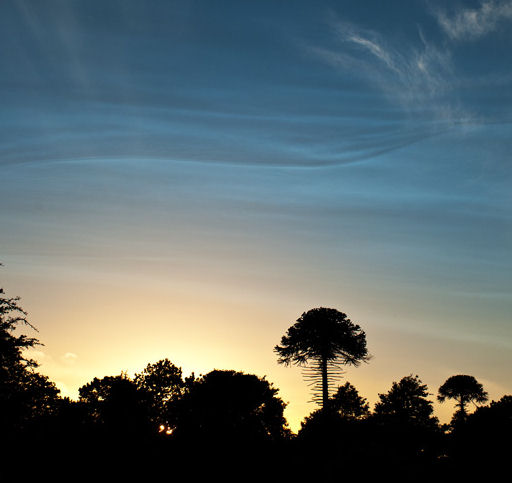NOCTILUCENT CLOUDS OVER EUROPE: The 2011 noctilucent cloud (NLC) season has begun. For the past few nights, observers across northern Europe have spotted velvety, electric-blue tendrils rippling across the sunset sky. John Houghton sends this picture from Newtown Linford, Leicester, UK:
"This was the best display of noctilucent clouds I've seen to date," he says. "It was visible even before sunset."
NLCs are a summertime phenomenon. In the upper atmosphere, 80+ km high at the edge of space itself, tiny ice crystals nucleate around microscopic meteoroids and other aerosols; when the crystals catch the rays of the setting sun, they glow electric blue. Ironically, these highest and coldest of clouds form during the warmest months on the ground.
Noctilucent clouds first appeared in the 19th century after the eruption of super-volcano Krakatoa. At the time, people thoght the clouds were caused by the eruption, but long after Krakatoa's ash settled, the clouds remained. In those early days, NLCs were a polar phenomenon, mainly seen in far-northern places such as Scandinavia or Alaska. In recent years they have intensified and spread with sightings as far south as Utah and Colorado. A NASA spacecraft named AIM is in orbit to investigate.
Readers, especially you at high latitudes, be alert for NLCs in the evenings ahead. Observing tips may be found in our 2009 Noctilucent Cloud Gallery.










I'm afraid this is an image not of noctilucent cloud but of, most likely, cirrostratus.
ReplyDeleteNLC are only ever seen between solar depressiona angles of 6 and 16 degrees below the horizon - that's why they're called 'night-shining' clouds.